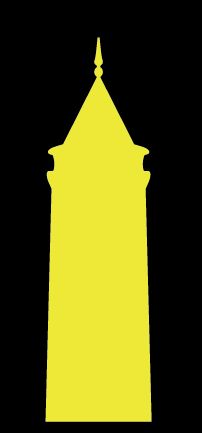The Making of: Taksim Belongs
to Pedestrians
Moderator Mustafa Tazeoğlu
Salt Beyoğlu
November 12, 2011 14.00
At the “2023 Vision of Turkey” meeting held June 1, 2011, Prime Minister of the Turkish Republic Recep Tayyip Erdoğan announced a project for the pedestrianization of Taksim Square. Presented with a set of accompanying visuals, the project outlined the transfer of roads around Taksim Square below ground, the removal of public transportation stops, and the designation of the area between the Atatürk Cultural Center (AKM) and the entrance of İstiklal Avenue as a pedestrian zone. The project description also included the rebuilding of the Taksim Artillery Barracks on the current site of Gezi Park, where the barracks were once located.
During the days of the Ottoman Empire, Taksim Square was an undefined, empty space at the end of İstiklal Avenue. After the establishment of the Turkish Republic in 1923, the area was gradually developed, eventually becoming one of the city’s best-known spots. With the exception of the large reservoir built during the 18th century, from which all of İstanbul’s water was once accumulated, the structures that today define Taksim Square date from the 20th century. Among the most important built during the Republican period are the Monument of the Republic erected in 1928; Gezi Park, which replaced the Artillery Barracks in 1940; and AKM, originally opened as the İstanbul Palace of Culture in 1969. After a fire in 1970, the building was repaired and renovated, and served the public as AKM from 1978 to 2008. The symbolic value assigned to Taksim Square by Turkey throughout the Republican era has made it the center of political gatherings at a nation-wide scale, as well as a destination for processions and parades. After 36 people were killed in a panic caused by the firing of guns at May 1st celebrations in 1977, however, Taksim Square was closed to Labor Day gatherings until 2010.
An intersection of public transportation including a subway system, buses and dolmuş [mini-buses], Taksim plays a crucial role in the daily life of İstanbul. Young people regularly meet in front of AKM to catch their school buses, or gather for a variety of activities around İstiklal Avenue. It is quite common for İstanbulites to happen upon a festival organized by the Municipality of İstanbul, or to encounter cheering vendors selling goods for Galatasaray and Beşiktaş, two of the city’s most popular soccer teams. Open-air stages at the entrance of Gezi Park host public concerts around holidays and New Year’s Eve, and during international sporting events, it is customary to install huge screens between the reservoir and the Monument of the Republic.
Besides diverting transportation underground and replacing greenery with an old building, what other solutions can be offered to reorganize the heavy flow of people and traffic in Taksim Square?
This workshop will be held in Turkish. The page for the workshop in English on October 1, 2011 can be viewed here.
You can register to the workshop by emailing your contact information to salt@saltonline.org
During the days of the Ottoman Empire, Taksim Square was an undefined, empty space at the end of İstiklal Avenue. After the establishment of the Turkish Republic in 1923, the area was gradually developed, eventually becoming one of the city’s best-known spots. With the exception of the large reservoir built during the 18th century, from which all of İstanbul’s water was once accumulated, the structures that today define Taksim Square date from the 20th century. Among the most important built during the Republican period are the Monument of the Republic erected in 1928; Gezi Park, which replaced the Artillery Barracks in 1940; and AKM, originally opened as the İstanbul Palace of Culture in 1969. After a fire in 1970, the building was repaired and renovated, and served the public as AKM from 1978 to 2008. The symbolic value assigned to Taksim Square by Turkey throughout the Republican era has made it the center of political gatherings at a nation-wide scale, as well as a destination for processions and parades. After 36 people were killed in a panic caused by the firing of guns at May 1st celebrations in 1977, however, Taksim Square was closed to Labor Day gatherings until 2010.
An intersection of public transportation including a subway system, buses and dolmuş [mini-buses], Taksim plays a crucial role in the daily life of İstanbul. Young people regularly meet in front of AKM to catch their school buses, or gather for a variety of activities around İstiklal Avenue. It is quite common for İstanbulites to happen upon a festival organized by the Municipality of İstanbul, or to encounter cheering vendors selling goods for Galatasaray and Beşiktaş, two of the city’s most popular soccer teams. Open-air stages at the entrance of Gezi Park host public concerts around holidays and New Year’s Eve, and during international sporting events, it is customary to install huge screens between the reservoir and the Monument of the Republic.
Besides diverting transportation underground and replacing greenery with an old building, what other solutions can be offered to reorganize the heavy flow of people and traffic in Taksim Square?
This workshop will be held in Turkish. The page for the workshop in English on October 1, 2011 can be viewed here.
You can register to the workshop by emailing your contact information to salt@saltonline.org


